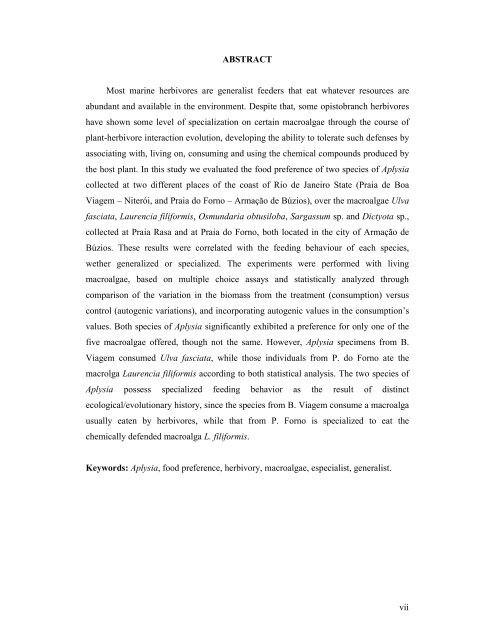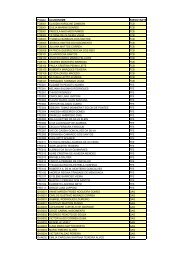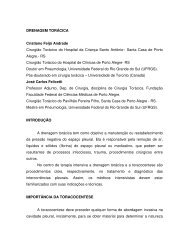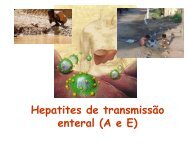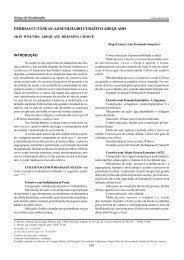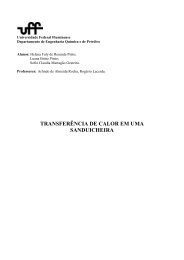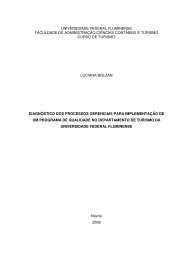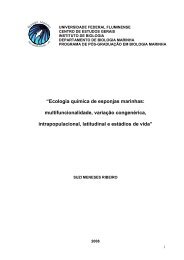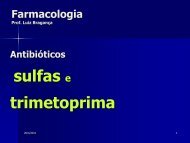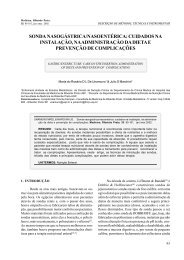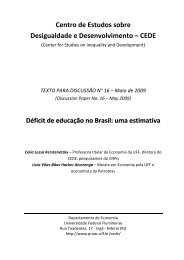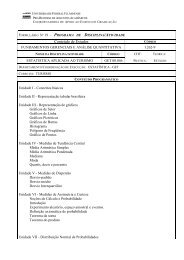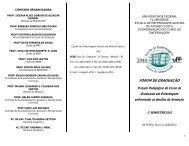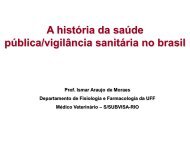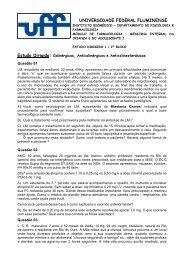Preferência alimentar de espécies de Aplysia sp. sobre ... - Proac
Preferência alimentar de espécies de Aplysia sp. sobre ... - Proac
Preferência alimentar de espécies de Aplysia sp. sobre ... - Proac
You also want an ePaper? Increase the reach of your titles
YUMPU automatically turns print PDFs into web optimized ePapers that Google loves.
ABSTRACT<br />
Most marine herbivores are generalist fee<strong>de</strong>rs that eat whatever resources are<br />
abundant and available in the environment. De<strong>sp</strong>ite that, some opistobranch herbivores<br />
have shown some level of <strong>sp</strong>ecialization on certain macroalgae through the course of<br />
plant-herbivore interaction evolution, <strong>de</strong>veloping the ability to tolerate such <strong>de</strong>fenses by<br />
associating with, living on, consuming and using the chemical compounds produced by<br />
the host plant. In this study we evaluated the food preference of two <strong>sp</strong>ecies of <strong>Aplysia</strong><br />
collected at two different places of the coast of Rio <strong>de</strong> Janeiro State (Praia <strong>de</strong> Boa<br />
Viagem – Niterói, and Praia do Forno – Armação <strong>de</strong> Búzios), over the macroalgae Ulva<br />
fasciata, Laurencia filiformis, Osmundaria obtusiloba, Sargassum <strong>sp</strong>. and Dictyota <strong>sp</strong>.,<br />
collected at Praia Rasa and at Praia do Forno, both located in the city of Armação <strong>de</strong><br />
Búzios. These results were correlated with the feeding behaviour of each <strong>sp</strong>ecies,<br />
wether generalized or <strong>sp</strong>ecialized. The experiments were performed with living<br />
macroalgae, based on multiple choice assays and statistically analyzed through<br />
comparison of the variation in the biomass from the treatment (consumption) versus<br />
control (autogenic variations), and incorporating autogenic values in the consumption’s<br />
values. Both <strong>sp</strong>ecies of <strong>Aplysia</strong> significantly exhibited a preference for only one of the<br />
five macroalgae offered, though not the same. However, <strong>Aplysia</strong> <strong>sp</strong>ecimens from B.<br />
Viagem consumed Ulva fasciata, while those individuals from P. do Forno ate the<br />
macrolga Laurencia filiformis according to both statistical analysis. The two <strong>sp</strong>ecies of<br />
<strong>Aplysia</strong> possess <strong>sp</strong>ecialized feeding behavior as the result of distinct<br />
ecological/evolutionary history, since the <strong>sp</strong>ecies from B. Viagem consume a macroalga<br />
usually eaten by herbivores, while that from P. Forno is <strong>sp</strong>ecialized to eat the<br />
chemically <strong>de</strong>fen<strong>de</strong>d macroalga L. filiformis.<br />
Keywords: <strong>Aplysia</strong>, food preference, herbivory, macroalgae, e<strong>sp</strong>ecialist, generalist.<br />
vii


